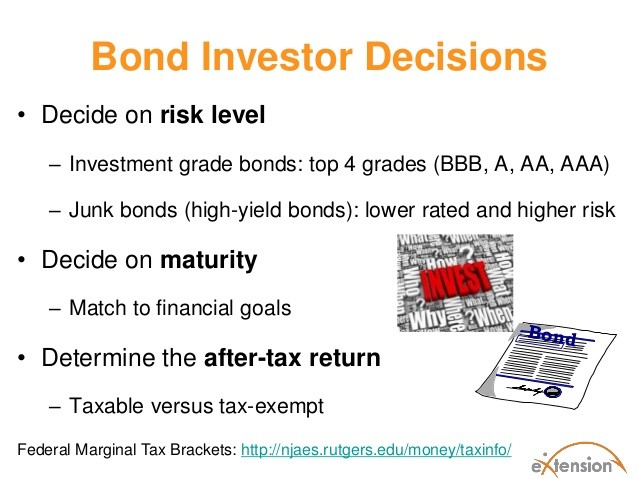Understanding Bonds How to Reduce the RisksKiplinger
Post on: 9 Июль, 2015 No Comment

Bonds have risks you won’t find in other types of investments. Find out how to spot risky bonds and how to avoid them.
Bonds can help diversify your portfolio, but they are not risk-free. Find out how bonds work and how to put them to work for you.
See Also: The Basics of Investing in Bonds
Interest-Rate Changes
The market value of the bonds you own will decline if interest rates rise. This unalterable relationship suggests the first of several risk-reducing steps you can take as a bond investor:
Don’t buy bonds when interest rates are low or rising. Put your cash in a money-market fund or in certificates of deposit maturing in three to nine months. The ideal time to buy bonds is when interest rates have stabilized at a relatively high level or when they seem about to head down.
Stick to short- and intermediate-term issues. Maturities of three to five years will reduce the potential volatility of your bond holdings. They fluctuate less in price than longer-term issues, and they don’t require you to tie up your money for ten or more years in exchange for a relatively small additional yield.
Advertisement
Acquire bonds with different maturity dates to diversify your bond holdings. A mix of issues maturing in one, three and five years will protect you from getting hurt by interest rate movements you can’t control. Mutual funds are an excellent way to achieve diversity in your bond investments.
Issuer Default

Interest-rate rises aren’t the only potential enemy of bond investors. Another risk to consider is the chance that the organization that issued the bonds won’t be able to pay them off. It’s not realistic to expect that you could do the kind of balance-sheet analysis it takes to size up a company’s ability to pay off its bonds in ten, 20 or even 30 years. Assessing the creditworthiness of companies and government agencies issuing bonds is a job for the pros, the best known of which are Standard & Poor’s and Moody’s. If the issuer earns one of the top four investment grades assigned by the companies — AAA, AA, A or BBB from Standard & Poor’s, and Aaa, Aa, A or Baa from Moody’s — the risk of default is considered slight. See What Bond Ratings Mean for more details.
Ratings below investment grade indicate that the bonds are considered either speculative (BB, Ba or B) or in real danger of default (various levels of C and, in the S&P ratings, a D, indicating that the issue is actually in default). You can consider any issue rated speculative or lower to be a junk bond, although brokers and mutual funds usually call them high-yield issues.
Individual junk bonds are very risky and it’s best to avoid them unless you’re willing to study the company’s prospects closely. Alternatively, you could purchase shares in a junk bond mutual fund, which would ease the risk a bit through diversification. Even then, junk bonds should never occupy more than a sliver of your portfolio.
Check the rating of any bond that you are considering purchasing or already own. A broker can give you the rating, or you can check online sources, including S&P. Moody’s and Bondsonline.com. For a mutual fund, the prospectus will describe the lowest rating acceptable to the fund’s managers, and the annual reports should list the bonds in the fund’s portfolio, along with their ratings. In general, the lower the rating, the higher the yield a bond must offer to compensate for the risk.
Diversify by buying bonds from several issuers or by investing in bond mutual funds. The fact that a municipal or corporate bond has a high rating is no guarantee that it is completely safe. All of the major credit-rating agencies missed the signs of distress at Enron Corporation, failing to lower their safety ratings until just days before the giant company filed for bankruptcy protection in late 2001. The raters said they had been deceived by Enron and would have dropped their ratings much sooner if they had had the facts.














